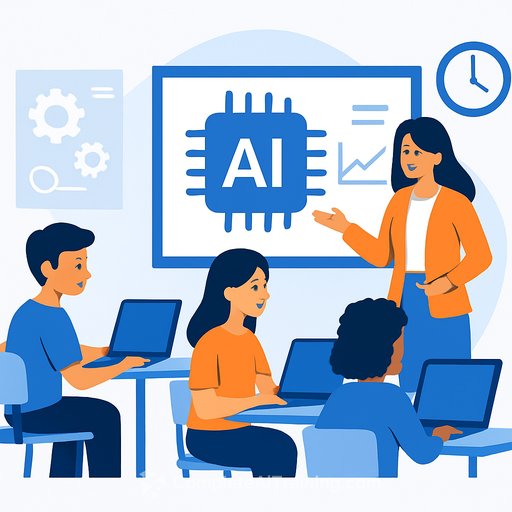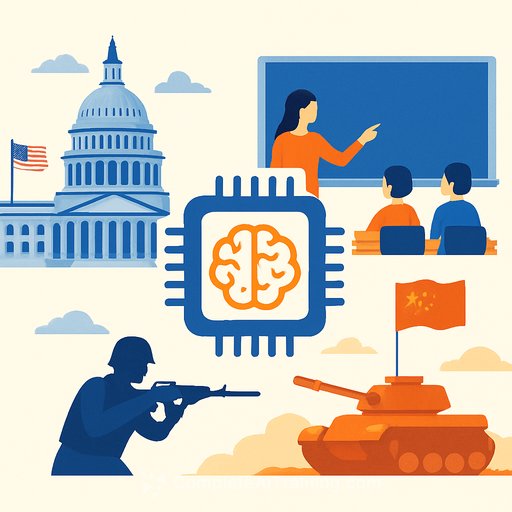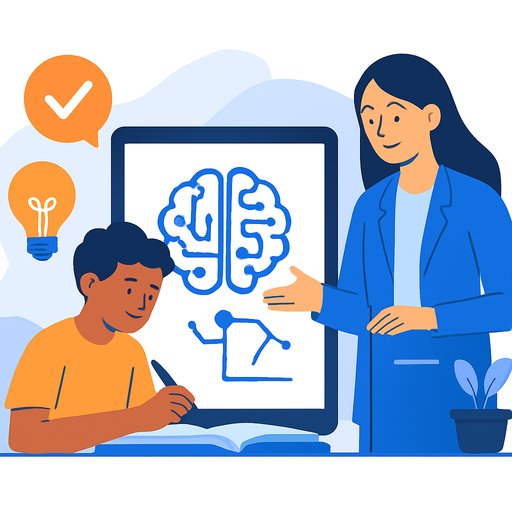Tech giants invest millions to train US teachers as AI moves into classrooms
AI is moving from add-on to core classroom infrastructure. Teachers are adopting tools that grade, plan, translate, and adapt instruction. The priority is clear: use AI to improve learning while keeping pedagogy, ethics, and professional judgment in educators' hands.
Unions are stepping in to make that real. The American Federation of Teachers (AFT) and the National Education Association (NEA) are partnering with major tech firms to fund large-scale training while preserving educator oversight of curriculum, intellectual property, and classroom use.
Where the money is going
AFT has agreements with Microsoft, OpenAI, and Anthropic reported at $12.5M, $8M plus technical resources, and $500K respectively. Funds support a central AI training hub in New York City with a plan to train 400,000 teachers over five years. The NEA is launching online microcredentials with Microsoft for 10,000 educators this school year.
Union control matters. Educators design the coursework, set ethical guidelines, and protect teacher IP. For more on each organization, see AFT and NEA.
Policy backdrop
Federal policy has encouraged private-sector investment in K-12 AI literacy through an AI Education Task Force, drawing participation from 100+ companies. Microsoft and Google have expanded access to AI platforms for students and teachers, lowering barriers for pilots and PD.
AI in practice: expanding the teacher toolkit
Early training workshops highlight practical gains. Teachers are using AI to automate routine feedback, generate lesson plans in minutes, translate texts across languages, and create differentiated materials that fit reading levels. Digital storybooks, interactive exercises, and visual aids are now a prep-period task-not a weekend project.
Adoption is rising, but comprehensive training still lags, according to recent analysis from the Center on Reinventing Public Education. AFT and NEA programs aim to close that gap with an emphasis on safe use, bias awareness, student privacy, and teacher authority over classroom decisions.
Risks and guardrails
Key concerns: over-reliance on automation, weakened critical thinking, uneven access to devices and broadband, data privacy, and conflicts of interest in vendor-led training. The fix is governance: clear policies for acceptable use, plain-language data agreements, and evaluation criteria tied to learning-not vendor metrics.
For students, AI can improve accessibility, language support, and pacing. For teachers, AI fluency will influence relevance, workload, and career paths. For companies, schools are both a market and a pipeline-another reason unions and districts need firm guardrails.
District playbook: what leaders can do now
- Form an AI steering team with teachers, union reps, IT, SPED, EL, and families.
- Publish an acceptable-use policy that covers data handling, bias, attribution, and academic honesty.
- Adopt procurement criteria: curriculum fit, privacy terms (no student data reuse), audit logs, offline plans.
- Run short pilots (6-9 weeks) with clear hypotheses, baseline data, and opt-in teacher teams.
- Provide PD tied to classroom products (coaching cycles, office hours, model lessons).
- Budget for devices, broadband, and accessibility supports to avoid widening gaps.
- Create family-facing guides on how AI is used, what data is collected, and how to opt out.
- Coordinate with unions on evaluation norms so AI use supports, not skews, observations.
- Maintain a vetted prompt and lesson library teachers can copy, adapt, and share.
- Set a review cadence (quarterly) to renew, scale, or sunset tools based on evidence.
Classroom playbook: practical moves for teachers
- Start with the learning goal; use AI to handle prep, not to replace explanation or feedback where teacher judgment is key.
- Define "AI-allowed" and "no-AI" tasks for each unit; state why for students.
- Build a prompt bank: lesson outlines, reading-level adjustments, multimodal supports, and language translations.
- Co-create rubrics with AI drafts, then refine with colleagues for clarity and fairness.
- Use AI for scaffolded materials (sentence starters, vocabulary supports, visuals) while keeping cognitive demand high.
- Offer alternative formats: audio summaries, transcripts, and bilingual handouts.
- Collect evidence: time saved, student work samples, and formative data each week.
- Teach citation and AI transparency: students label what AI assisted and how.
- Protect privacy: remove names, disable sharing, and keep sensitive data out of prompts.
Procurement questions that surface issues early
- What data is collected, stored, and used to train models? For how long, and where?
- Is there a student data addendum that meets state law and district policy?
- Can we disable features (chat, image gen, external plugins) by role or grade band?
- How are bias, hallucinations, and harmful content handled? What is the appeal path?
- What integrations exist (LMS, SIS, SSO)? What logs are available for audits?
How to measure impact without busywork
- Teacher time: minutes saved per week on grading and planning.
- Student outcomes: growth on common assessments, writing quality, and reading fluency.
- Engagement: assignment completion, discussion participation, and attendance trends.
- Equity: access to devices and translation supports; IEP/504 accommodation delivery.
- Confidence: teacher and student self-reports on clarity, support, and autonomy.
The bottom line
AI will be embedded across classrooms. Educators who build skill and set guardrails will reduce low-value work and deliver more responsive instruction. The work ahead is practical: train well, protect students, and keep teaching at the center.
Further learning
For educators mapping training to roles and vendor ecosystems, explore curated options at Complete AI Training: Courses by job and AI courses by leading companies.
Your membership also unlocks:






